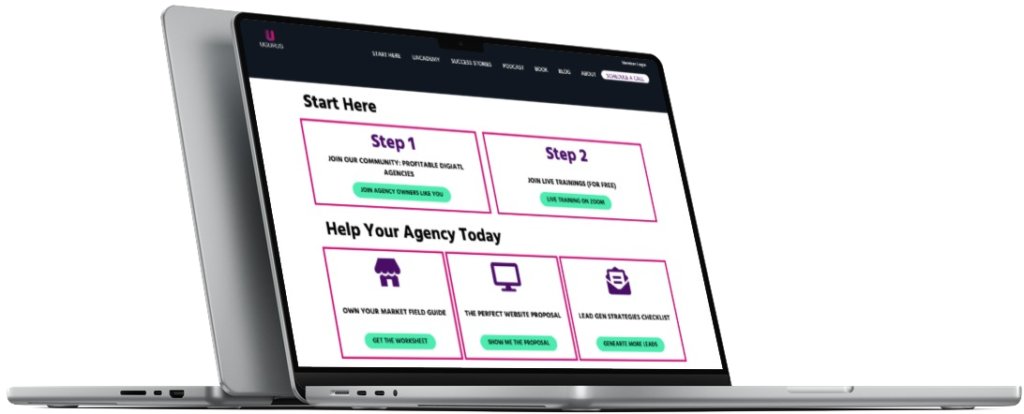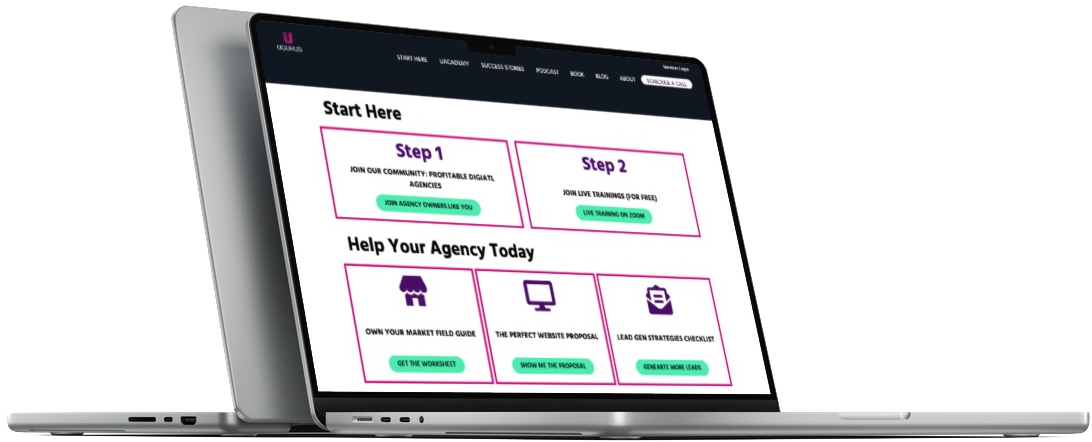Ever heard the saying, “too much of a good thing can be bad?”
Well, I was just chatting with a close freelance front-end designer friend of mine and she needed some help navigating a tough situation. You see, she started freelancing for a company for her normal hourly rate.
She was getting paid well and loving the work.
As time went on, the company loved her work so much that they wanted more of it. Instead of asking nicely, they figured they could squeeze her on her hourly and get more work for the same price. Because the client was sending so much work her way, she conceded and alas she started making less, but working more.
Slowly she began to have less time for other higher paying projects and this main client became her main source of income. She found herself in a bit of a pickle, and now realizes that she needs to get her rate back up, but this client is most of her monthly pay.
A pickle indeed.
While I wish I could say that you should just avoid this situation by not getting in it in the first place, that would leave you with little tangible advice and would be a cheap shot at a difficult situation to navigate.
The Core Problem
If you’re a freelancer in a similar position, it’s important to know where this issue originates. There is a stereotype that’s rampant that the customer has all the power in a business relationship.
We all have a fear embedded in your psyche that if we turn down this business, that there won’t be another opportunity around the bend. Our brains are hardwired to think in terms of scarcity. This is a relic of our ancestors running out of berries and dinasaur meat. Where will my paycheck come from if not from here?
So when my friend’s client said, “Instead of $70 per hour, we’re going to pay you $60…” she thought, “What’s the harm there? I want to keep getting paid, so I’ll take it.”
Here’s the harm illustrated in a nice table:
Earning potential working 10 hours per week for a client
|
Weeks |
$60 |
$70 |
Value lost |
|
1 |
$600 |
$700 |
$100 |
|
5 |
$3,000 |
$3,500 |
$500 |
|
10 |
$6,000 |
$7,000 |
$1,000 |
|
25 |
$15,000 |
$18,750 |
$3,750 |
|
52 |
$31,200 |
$36,400 |
$5,200 |
|
104 |
$61,400 |
$72,800 |
$11,400 |
|
156 |
$92,600 |
$109,200 |
$16,600 |
As you can see from the table, if she were to keep this contract for the next three years, this tiny little decision of “yeah, I’ll take it, what’s the harm?” adds up to over $16k (the cost of a nice used car or blingtastic vacation).
The reason that I think it’s important to look at the lost value over a period of time when you undercut your rates is because it lays out the real loss right in front of you. The question I always ask is this:
“How long would it take you to go out and hustle to find that next client that is willing to pay your rate?”
Based on the chart, at 250 hours worth of work, the lost revenue is $3,750 which means if it took her less than 53 hours of hustling to find a replacement client, she would be ahead. If the replacement client delivered 520 hours of work, then she has 74 hours to find that new client.
You can do a lot of work to sell and market your business in that amount of time.
Willing to Walk
The only surefire way to get the rate you want is to be willing to walk away from the client or project. You can’t work for a low rate if you decide to pass on the project. You can pivot your time to focusing on finding a better client that is willing to pay your value.
A simple, “you know, I wish I could do the project for that lower rate, but I can’t. Here is what my rate or quote is, and I know that I am going to do an amazing job for you and I know I’m worth that” is good enough.
No reason to dance the issue.
But, the secret to a good objection handle is to flip your answer into a question. “Why do you need me to charge a lower rate? Are there budget or cashflow problems?”
Get your client to own up to the situation. Figure out if they are trying to squeeze you or if there is another way that they can help you meet your business obligations while also meeting their goals.
Where Your Power Comes From
You still might be scared of walking away from a project. I mean, this literally could be your meal ticket for the next two months. But if you have gotten lazy with your marketing, networking, and business development activities and are finding yourself in a situation where a single client is the majority of your weekly billable activity, then you are in a bind.
The only way to break the cycle is to find more clients willing to pay your rate.
If you have five potential customers waiting in the wings, it becomes ever so easy to say, “Thank you for the opportunity to work with you, but if you aren’t able to afford my services, I need to open up this project time to my next client. Just so you know, if I take this other contract, that will mean I won’t be available to work on this job for another six weeks if your other options fall short.”
If your client is just trying to squeeze you for more profit for themselves, they might take your bluff (or real hand) and give in to your demands for higher value pay. Often the time it takes to find another reliable, trustworthy, and dependable contractor far outweighs what little scruples your haggling over.
If you find yourself in this situation where a single client is finding ways to get your rate or prices lower and lower, take this as a call to action to put your sales and marketing in high gear to ramp up your opportunities.
Don’t settle for a lower rate. You now know the negative impact that this choice will have on your bottom line in the long run. The opportunity cost is great and might be the difference between you taking that trip to the Caribbean.
Have you found yourself in this situation? Let me know by commenting below or hitting me up on Twitter (@brentweaver).
GET YOUR FREE AGENCY ACCELERATOR PACKAGE





